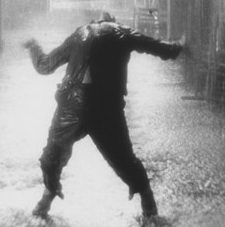The Lurid Blu-ray Brilliance of The Naked Kiss and Shock Corridor
 Samuel Fuller's twisted 1960s masterpieces The Naked Kiss and Shock Corridor (both of which made their Blu-ray debuts last week from the Criterion Collection) may feature whores, child molesters and nymphomaniacs among their lead characters, but beneath the sensationalism, both films rank as fascinating portraits of their time and rare explorations of society's outcasts. They're also incredibly entertaining.
Samuel Fuller's twisted 1960s masterpieces The Naked Kiss and Shock Corridor (both of which made their Blu-ray debuts last week from the Criterion Collection) may feature whores, child molesters and nymphomaniacs among their lead characters, but beneath the sensationalism, both films rank as fascinating portraits of their time and rare explorations of society's outcasts. They're also incredibly entertaining.
And while it's a pity that the two weren't packaged together, it's absolutely worth buying both of them, not just for the terrific movies themselves but also for the trove of great extras that have been thrown in, especially (on the Shock Corridor disc) Adam Simon's fascinating 1996 documentary on Fuller, The Typewriter, the Rifle and the Movie Camera, which explores the artist's path from reporter to soldier to filmmaker. (Compare that to the trajectory of most directors of the last half-century, who transitioned from movie nerd to film student to auteur.)
Both films deal with people trying to make a better life for themselves, with disastrous results. In The Naked Kiss, Constance Towers plays Kelly, a prostitute who decides to go straight after she arrives in the quaint town of Grantville. She comes close to marrying the town's rich scion, but after she realizes he is a pederast, she kills him and finds few allies when her past returns to haunt her. Peter Breck's journalist in Shock Corridor wants to win the Pulitzer Prize by going undercover in a mental hospital to solve a murder -- but winds up losing his mind instead.
Fuller may traffic in lurid melodrama, but dang if he doesn't know how to get an audience's attention, from the unforgettable opening of Naked Kiss (Kelly beats up the pimp who has just shaved her bald) to Shock Corridor's attack-of-the-nymphos sequence and the film's black character who -- after being the first student to integrate a Southern university -- imagines himself to be a hood-wearing white supremacist.
Besides the Simon documentary, the discs include vintage Fuller interviews from British and French TV, new interviews with Towers (who stars in both films), excerpts from Fuller's memoirs, essays by critic Robert Polito, and eye-catching cover art by cartoonist Daniel Clowes (Ghost World).
All this contextual background certainly comes in handy, particularly for audiences taking on these weird and wonderful movies for the first time. As critic Danny Peary once noted, "Sending someone to a Samuel Fuller melodrama with your ardent recommendation is a risky proposition. It's safer to go along so you can explain exactly why what they're seeing is so good, when their inclination is to think the opposite."
